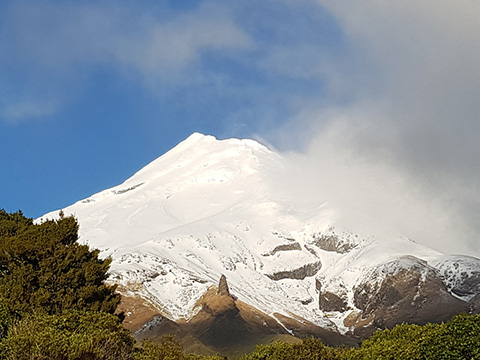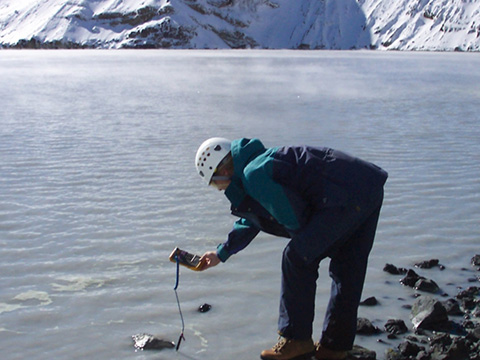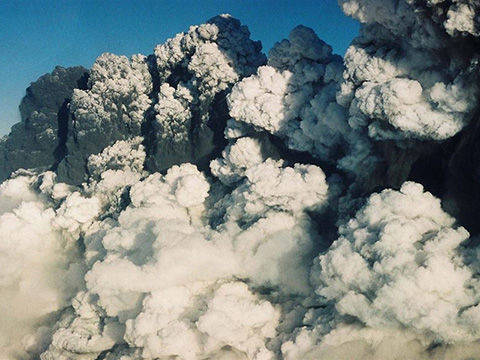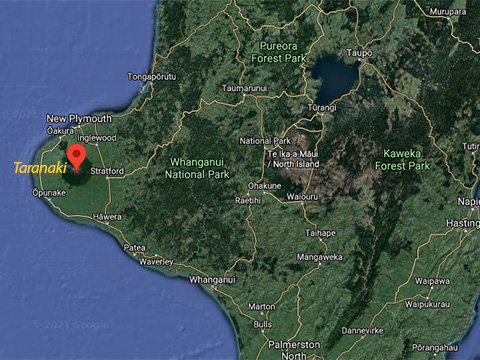Travel to Taranaki mounga, an active volcano, to see the effects of past eruptions. Find out how large parts of Aotearoa would be affected by the likely next eruption, and how we need to be prepared.
Discover more >
Background reading, images, narrations, keywords and quizzes.
Connect with experts >
Insights into people, their careers and a chance to ask them questions in a LIVE web conference.
Explore the field trip videos >
Videos and more showcasing places, people, ideas and initiatives on this field trip.
Take the Google Earth for Web tour >
A virtual tour of the field trip with GIS mapping, 3D locations, images, daily diaries and video.
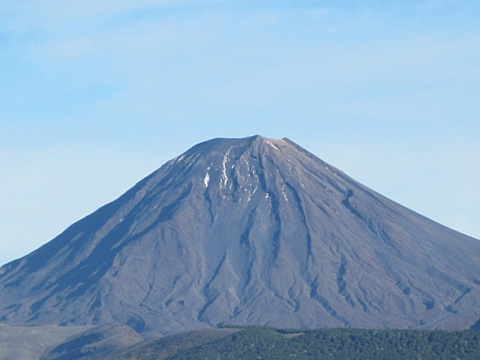
Share a volcano fact >
Share a fascinating volcano fact and win!
About this trip
As much as we might fear volcanoes, we need them. Volcanoes have created more than 80 percent of earth’s surface. Civilisations have grown up around volcanoes because the soil, enriched by eruptions, is great for farming. However, there is always risk to lives and livelihoods when we live close to an active volcano.
The Taranaki mounga dominates the landscape of the surrounding area and is still very active. An eruption is a matter of ‘when’ rather than ‘if’. Recent research estimates a 50 percent probability of an eruption in the next 50 years.
Māori were in the area when Taranaki last erupted and their oral record has helped us understand it. Although eruptions can be catastrophic, such as the infamous eruption of Vesuvius in AD 79 which destroyed the city of Pompeii, the impacts of a Taranaki eruption are more likely to be less but spread over a wide area over a long period.
Nowadays the risks remain but science has helped us to better understand volcanoes. Technology helps us to monitor volcanoes and estimate the likelihood of a future eruption.
Travel online with LEARNZ to:
- explore the science and mātauranga behind volcanoes
- look for evidence of past volcanic eruptions
- hear stories about volcanoes from mana whenua
- learn about the dangers of lahars and pyroclastic flows
- inspect monitoring sites to find out what they measure
- find out why volcanic soil attracts farming
- meet people who are prepared for a volcanic eruption and learn about their plans to manage the impacts.
Curriculum
This online field trip supports a STEM-based, cross curricular approach to teaching and learning. Participation encourages curiosity, citizen-science and student inquiry. Access the glossary.
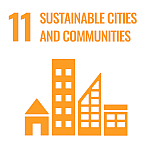 This trip reflects the United Nations Sustainable Development Goals (SDGs), especially Goal 11: Sustainable cities and communities: Make cities and human settlements inclusive, safe, resilient and sustainable.
This trip reflects the United Nations Sustainable Development Goals (SDGs), especially Goal 11: Sustainable cities and communities: Make cities and human settlements inclusive, safe, resilient and sustainable.

